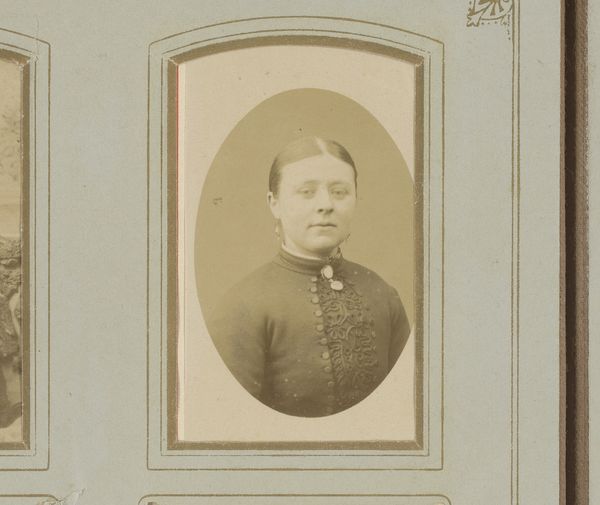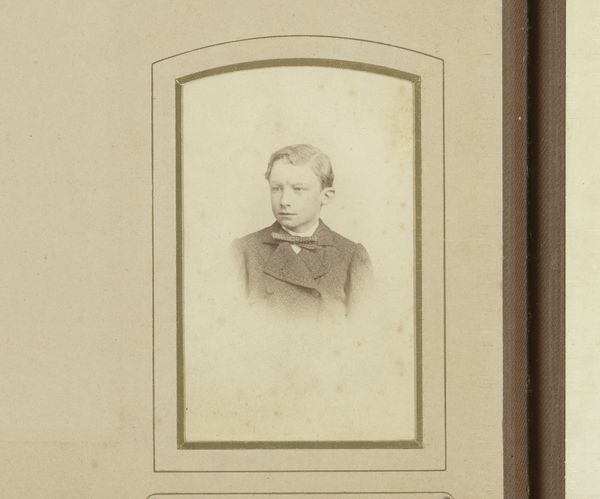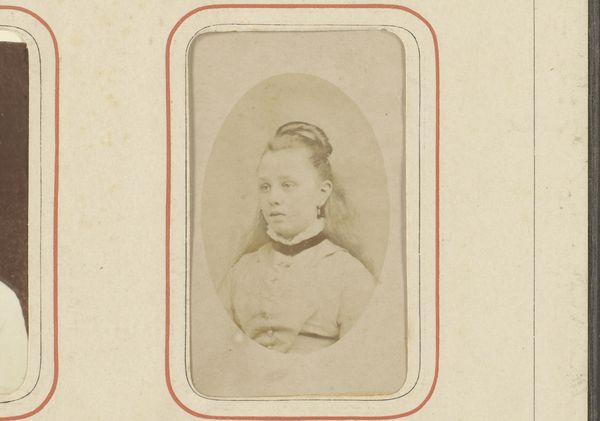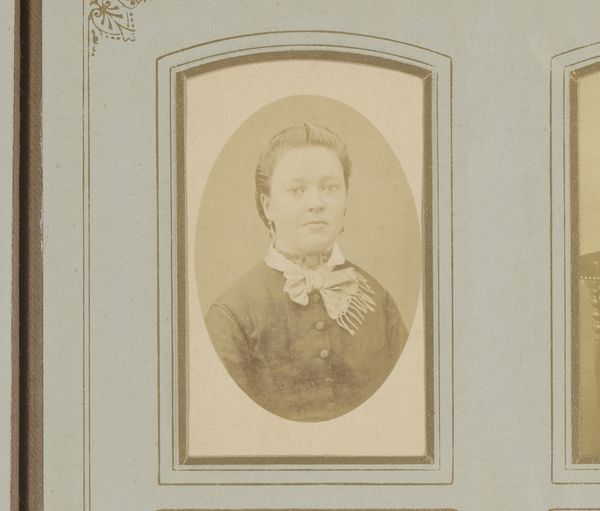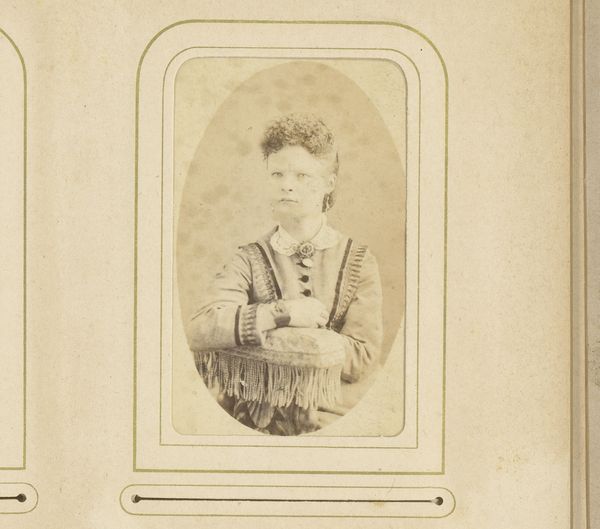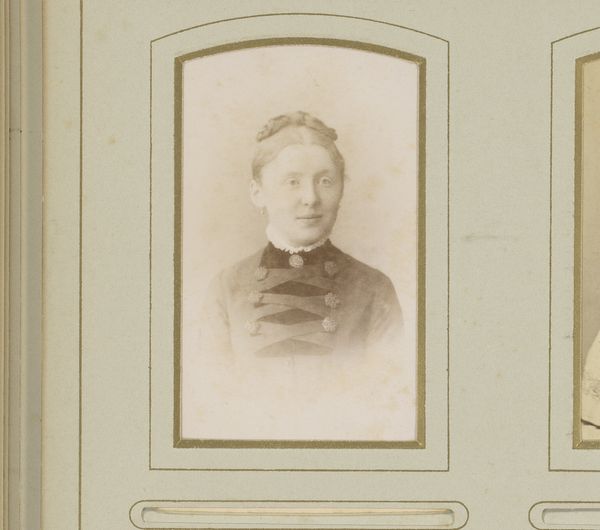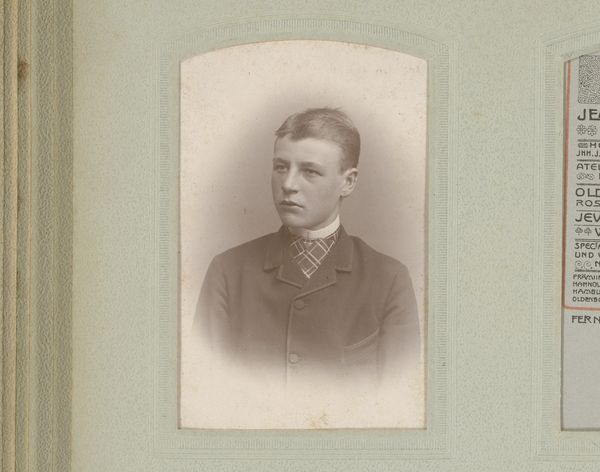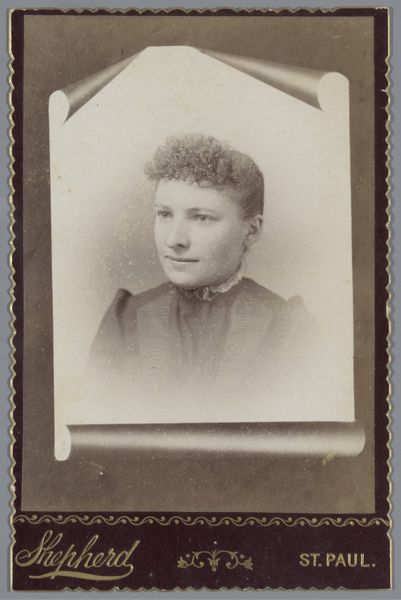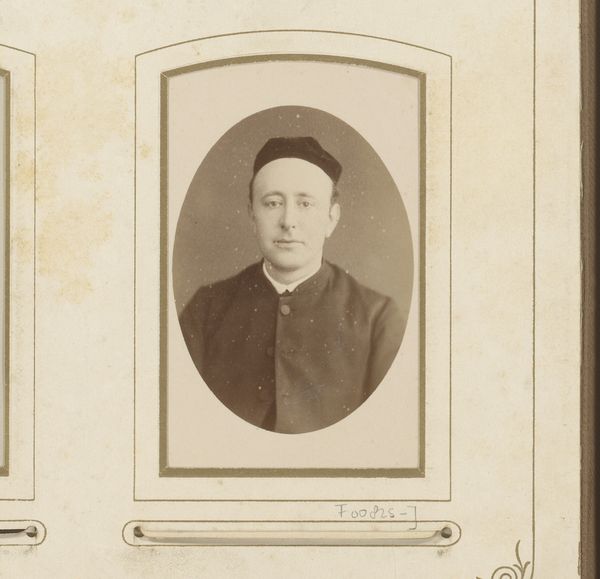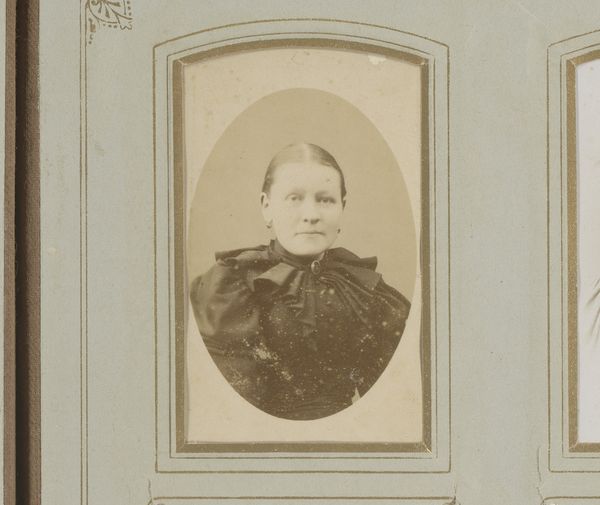
photography, albumen-print
#
portrait
#
photography
#
19th century
#
albumen-print
#
realism
Dimensions: height 85 mm, width 52 mm
Copyright: Rijks Museum: Open Domain
Curator: I am drawn to the quiet stillness of this portrait, even within its decorative oval frame. Editor: And it’s in a fascinating format, an albumen print. This photograph, entitled “Portret van een jonge vrouw met halsketting”—“Portrait of a Young Woman with Necklace”—was taken sometime between 1872 and 1891 by Gerrit Dirk Siewers. What strikes you particularly about its stillness? Curator: It is remarkably posed and flattened; the tones in the subject’s dress, especially, pull the figure forward rather than letting it recede into shadow, almost pushing against the edges of the oval. Editor: Indeed, that lack of strong shadow flattens the picture plane, common in photography of that era, reflecting a different understanding of light and volume. It's a rather plain style that lends the portrait an almost clinical feel, as though documenting a member of the rising middle class. Her clothing seems to reflect a kind of serious propriety, without much flashiness in the way of adornment. Curator: Agreed. Note the composition—the soft light illuminating her face, drawing our attention directly to her eyes. The nearly symmetrical balance evokes a sense of stability, but also… constraint. It is in the line of her mouth; it does not disrupt the otherwise formal setting, but holds tension, a holding-back that contributes to the feeling of constraint. Editor: Perhaps it represents a cultural expectation of young women to be demure and modest. Portraiture served as a means of not only memorialization, but also social representation, signifying status and belonging. Curator: Precisely. But notice, too, the quality of the albumen print itself. Its subtle warmth enhances the sitter’s complexion. The very fine details in her hair and in the lace suggest meticulous execution. This photograph could be seen as a technical accomplishment and a carefully constructed image. Editor: Yes, the albumen printing process itself, with its layering of egg white and silver salts, certainly gave a rich tonal range for its time. And it speaks volumes about the subject's socioeconomic position. The cost of commissioning a photographer like Siewers to create an albumen portrait during this period indicates an entry point into a specific tier within Dutch society. It’s a meticulously rendered symbol of respectability and social standing. Curator: A compelling glimpse into both the individual and the society that shaped her. Editor: It gives a sense of material constraint and access, both materially in terms of access to resources to afford the work, but constraints within the representation of a human, especially the portrait of a woman.
Comments
No comments
Be the first to comment and join the conversation on the ultimate creative platform.
